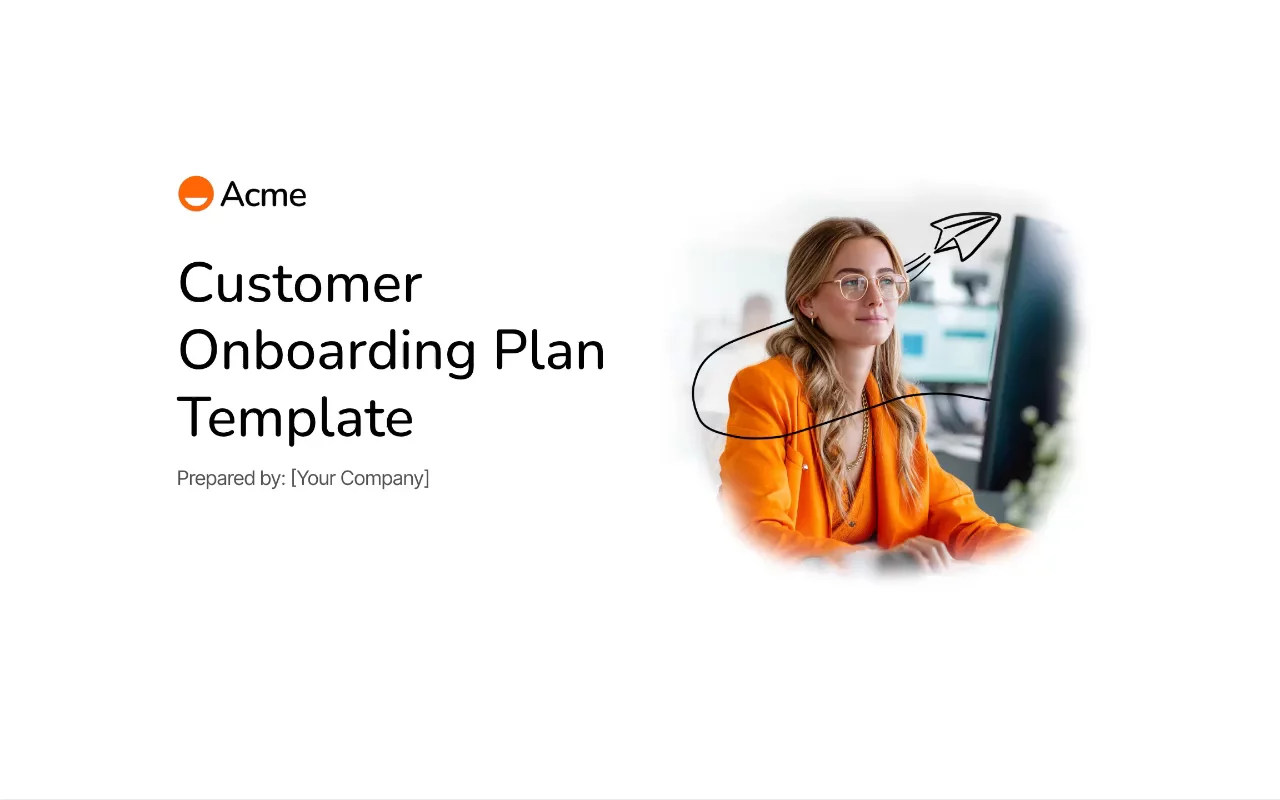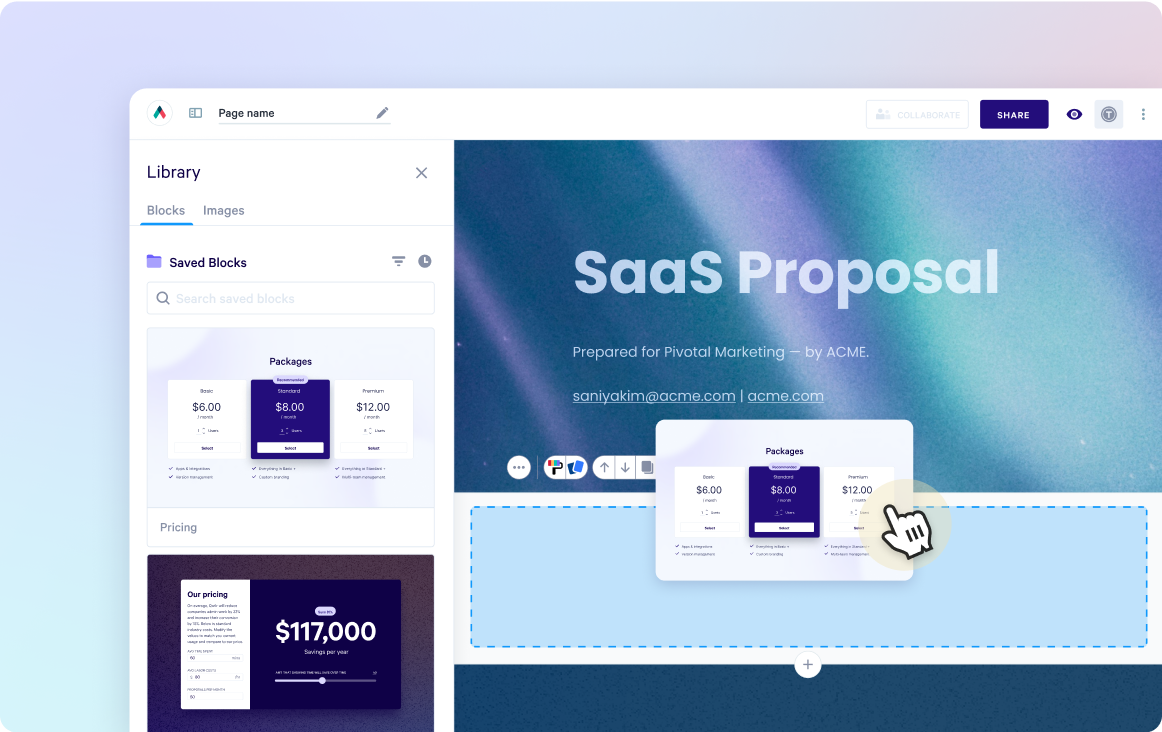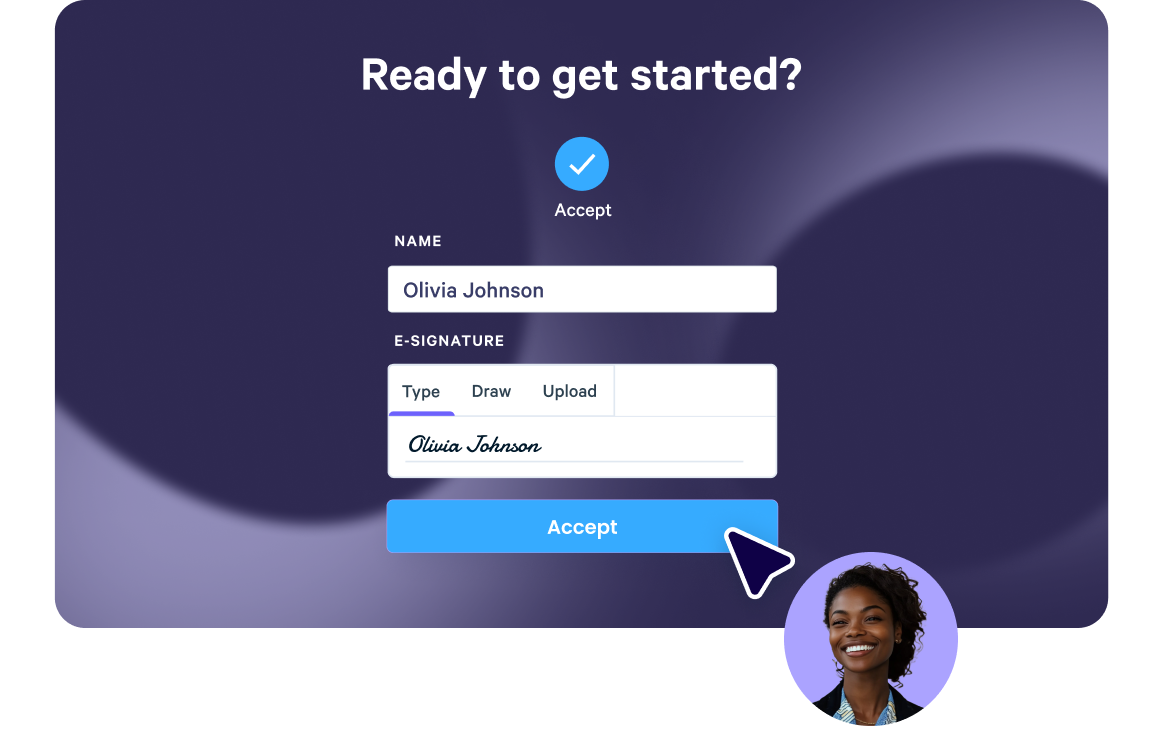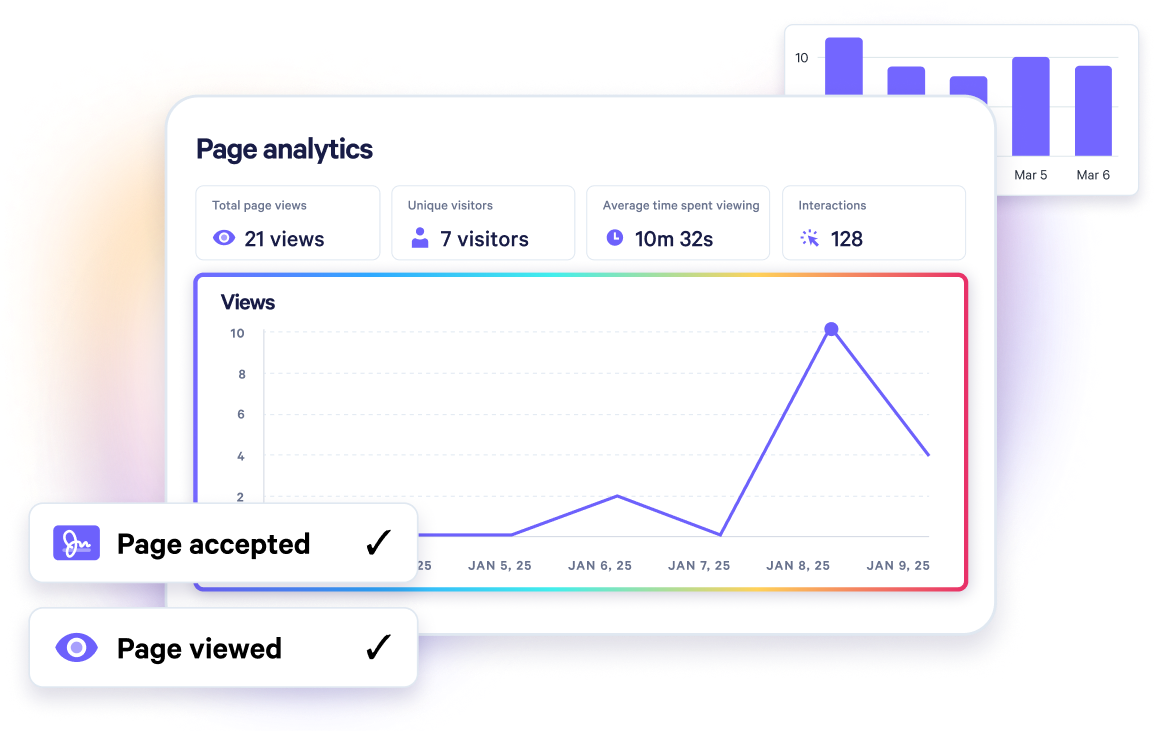Customer Onboarding Plan Template
Improve onboarding outcomes with a word-class customer onboarding plan – design a comprehensive, clear, and engaging plan for your clients.

About this template
Enhance customer experiences with our meticulously crafted Customer Onboarding Plan Template. This template showcases your ability to address clients' needs and deliver personalized solutions while ensuring a seamless onboarding process.
Engage your clients and demonstrate your commitment to their success with a well-structured, clear, and captivating onboarding plan. Our Customer Onboarding Plan Template is designed to effectively communicate your approach to client integration, fostering trust and driving higher satisfaction rates for your business.
What's included?
- Intro
- Training summary with videos
- Getting started resources
- Calendar embed
- Helpful links
- Contact information
Why Qwilr?
Design interactive proposals
Impress buyers with interactive proposals that stand out. Qwilr’s drag-and-drop editor makes it easy to create on-brand, stunning collateral — no design skills needed. Add videos, dynamic pricing, and ROI calculators to deliver a unique experience, while automated brand customizations ensure every proposal looks professional.

Built-in e-sign functionality
Combine stunning proposals, plain-text agreements, and secure e-signatures in one tool. Add print-friendly agreements alongside dynamic content and collect legally compliant e-signatures with ease. Track progress, capture multiple signatures, and close deals faster with Qwilr’s integrated e-sign functionality.

Real-time proposal analytics
Qwilr’s analytics provide full visibility into buyer engagement. Track when proposals are opened, signed, or shared, and get instant notifications for key buyer activities. See what buyers click on, how they engage, and prioritize follow-ups based on real-time insights—all designed to help close deals faster.

Templates for every use case
Explore templates for sales, marketing, customer success, sales enablement and more.
Explore onboarding templatesFrequently asked questions
The following steps can be utilized for creating an effective onboarding plan:
- Define Goals and Objectives - Start by setting goals and objectives for the onboarding process.
- Build Customer Personas - Understand the demographics and pain points of your target customer, and adjust the onboarding plan accordingly.
- Map the Onboarding Journey - Identify critical customer touchpoints throughout the onboarding process and use these touch points to create a plan of activities for each stage guided by clear metrics.
- Determine Roles and Responsibilities - Identify essential teams and their roles in facilitating the customer onboarding plan. Ensure there is alignment between the whole support team and your customers' goals.
- Create Content and Communications - Develop resources and messaging for each stage of the plan, and identify channels, frequency, and messaging.
- Measure and Assess - Use key metrics to gauge the effectiveness of the onboarding process and make adjustments according to customer feedback.
Customer onboarding checklist is like a to-do list for the onboarding process. It's a list of specific steps that new customers should be taken through so they can receive maximum value from your product/service. A checklist will help to ensure that new customers receive all the necessary support and engagement they'll need to effectively engage with the product/service.
The following are key steps to creating a customer onboarding framework:
- Conduct Research - Understand why customers use your product or service, and how they interact with it to identify potential bottlenecks in their experience.
- Define milestones - Identify key milestones in the onboarding process, such as the first interaction, initial training, etc.
- Create a framework for each milestone - Establish steps, resources, and messaging for each milestone, and track the customer's progress in real-time.
- Conduct Regular Review and Adjustment - Continuously monitor and measure the effectiveness of the framework, making necessary adjustments as required to ensure optimal customer engagement and positive outcomes.







